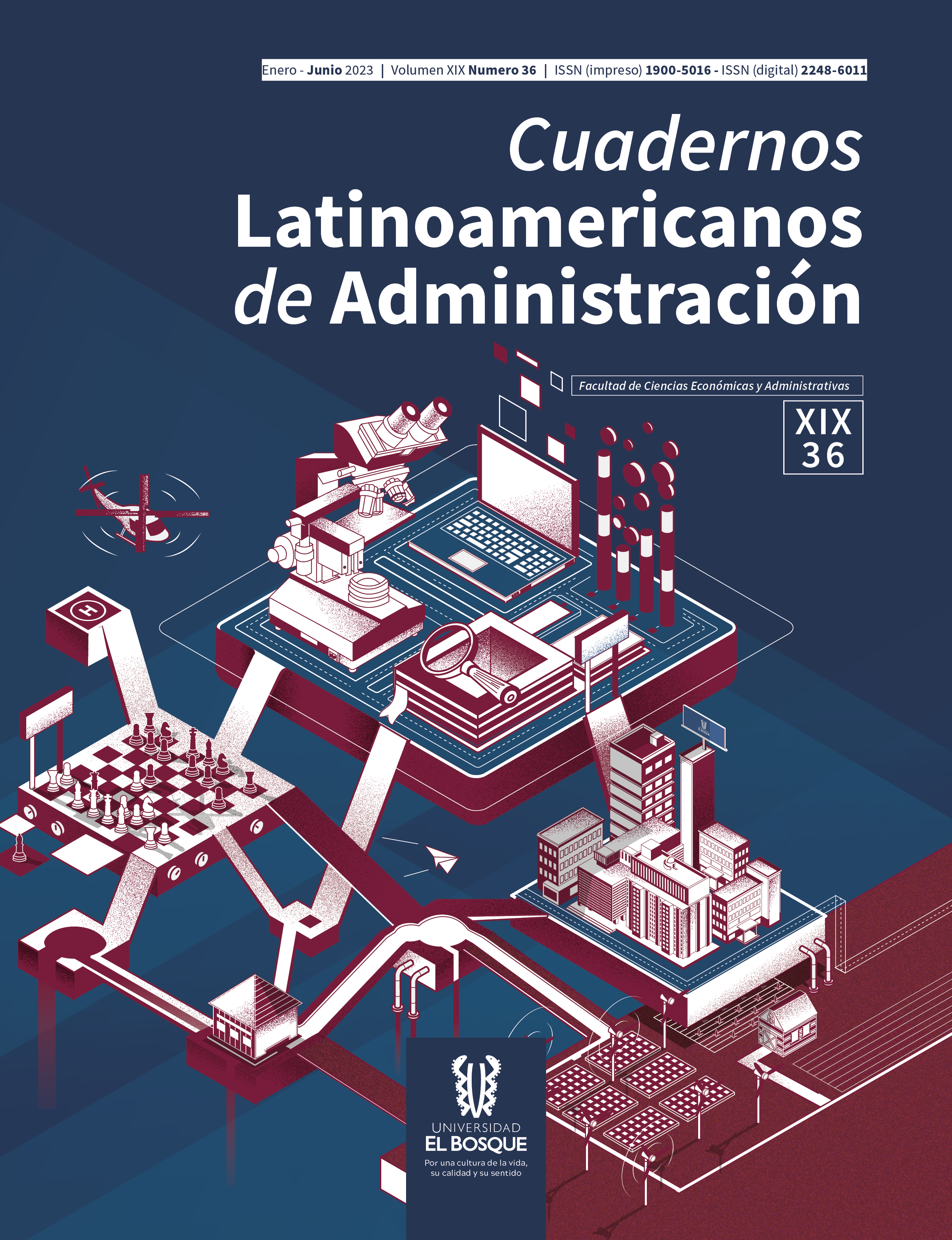Analysis of Public Policies for the adoption of Non-Conventional Renewable Energies in Colombia
DOI:
https://doi.org/10.18270/cuaderlam.v19i36.4052Keywords:
Environmental regulations, Greenhouse gases, Global warming, Non-conventional renewable energies, Energy efficiency.Abstract
The reactivation of industrial activity to recover the post-Covid-19 economy is expected to cause an increase in greenhouse gases because of the use of non-renewable natural resources such as coal, oil, and natural gas. In Colombia, however, the energy matrix has maintained a relatively constant proportion of installed capacity, favoring energy produced from hydroelectric sources (68% of energy from hydroelectric plants, 31% from thermoelectric plants, and 1% from wind and solar energy). Considering the country's potential for the development of non-conventional renewable energies, this research seeks to review current public policies for the adoption and promotion of these forms of energy as part of the energy transition towards energy sources that further minimize the contributions of Colombia to climate change. A documentary and descriptive research was carried out based on the information available in academic and institutional sources reviewed between 2014 and 2022. The results indicate that Colombia has an important regulatory legal framework that begins with Law 1715 of 2014, evolving until the present with the contributions of the regulations generated by the Energy and Gas Regulation Commission (CREG) and the Energy Mining Planning Unit (UPME), among others. As of 2019, decrees or laws have been generated to improve incentives and facilitate the establishment of projects to generate non-conventional renewable energy sources.
Downloads
References
Ballesteros, V. & Gallego, A. (2019). Modelo de educación en energías renovables desde el compromiso público y la actitud energética. Revista Facultad de Ingeniería, 28(52), 27–42. https://doi.org/10.19053/01211129.v28.n52.2019.9652
Bueno, M. & Calcagno, D. (2018). Cambio Climático y Energía: antecedentes y debates en torno a la adopción e implementación del Acuerdo de París. Cuadernos de Política Exterior Argentina (Nueva Época), 127:75-96.
Castaño, M. & García, J. (2020). Análisis de los incentivos económicos en la capacidad instalada de energía solar fotovoltaica en Colombia. Lecturas de Economía, 93, 23-64. https://doi.org/10.17533/udea.le.n93a338727
Climate Action Tracker (2021). Despite Glasgow Climate Pact 2030 climate target updates have stalled. www.climateactiontracker.org/publications/despite-glasgow-climate-pact-2030-climate-target-updates-have-stalled/
Collazos, A.; Esquivel, C. y Paz, A. (2019). De los hidrocarburos a las energías renovables en Colombia. Cultura Latinoamericana. 29 (1), pp. 138-162. DOI: http://dx.doi.org/10.14718/CulturaLatinoam.2019.29.1.6
Gutiérrez, A. & García, J. (2021). Fuentes de Energía Renovable, Recursos Energéticos Distribuidos y Almacenamiento en Colombia: Una Revisión de la Normatividad. Documentos del Centro de Investigaciones Económicas y Finacieras de la EAFIT. http://dx.doi.org/10.2139/ssrn.3768871
Instituto de Hidrología, Meteorología y Estudios Ambientales (IDEAM). (2015). Tercera Comunicación Nacional. www.cambioclimatico.gov.co/comunicacion-nacional-bur-2015
Latin Clima (2020). Red de Comunicación en Cabio Climático. www.latinclima.org/palabra-clave/united-science-2020
Londoño, A. (2017). Energías renovables en Colombia: una aproximación desde la economía. Energías Renovables En Colombia: Una Aproximación Desde La Economía, 25(38), 375– 390. https://doi.org/10.18566/v25n38.a7
Ministerio de Minas y Energía (MME) y Banco Interamericano de Desarrollo (BID). (2021). Transición energética: un legado para el presente y el futuro de Colombia. www.conte.org.co/libro-transicion-energetica-un-legado-para-el-presente-y-el-futuro-de-colombia/
Organización de las Naciones Unidas-ONU (2015). El Acuerdo de París. www.un.org/es/climatechange/paris-agreement
Pereira, M. & Turizo, L. (2020). Medidas para la implementación del uso racional y eficiente de la energía: caso de las energías renovables en Colombia, estado del arte, avances y retos. Revista Jurídica (17): 43–71. https://revistas.unicartagena.edu.co/index.php/Juridica/article/view/3146
Portador, T. (2020). Los retos de la seguridad humana frente al cambio climático. Relaciones Internacionales, (43), 189–207. https://revistas.uam.es/relacionesinternacionales/article/view/11446
REN21. (2019). Renewables 2019. Global Status Report.
https:/www.ren21.net/wp-content/uploads/2019/05/gsr_2019_full_report_en.pdf
Unidad de Planeación Minero Energético-UPME. (2020). Integración de las Energías Renovables No Convencionales en Colombia. Seguimiento Planes de Acción 2020. www1.upme.gov.co/Planes/Plan_accion_2020.pdf
Valora Analitik (20-10-2021). En nueva subasta de energías renovables en Colombia, habilitadas 61 empresas. www.valoraanalitik.com/2021/10/20/en-nueva-subasta-de-energias-renovables-en-colombia-habilitadas-61-empresas/
Downloads
Published
How to Cite
Issue
Section
License
Copyright (c) 2023 Cuadernos Latinoamericanos de Administración

This work is licensed under a Creative Commons Attribution-NonCommercial-ShareAlike 4.0 International License.
The authors when they send their articles for evaluation certify originality and transfer the proprietary rights to the Journal
Latin American notebooks Administration, University El Bosque, for dissemination in print and / or electronic. But scientific evidence, originality, content of the documents are the exclusive and sole responsibility of the authors.

| Article metrics | |
|---|---|
| Abstract views | |
| Galley vies | |
| PDF Views | |
| HTML views | |
| Other views | |












